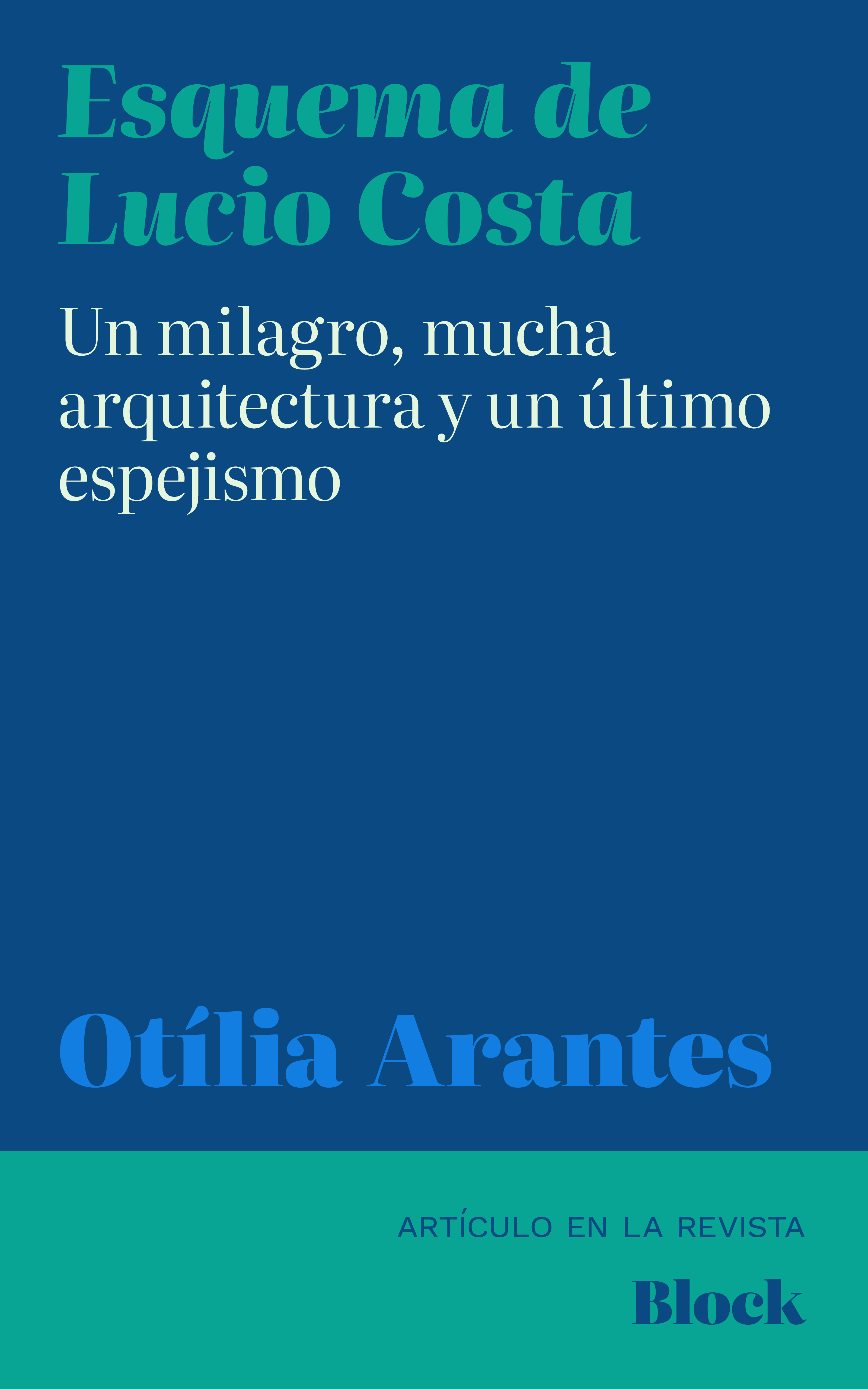Lucio Costa’s Summary
A miracle, abundant architecture, and one last illusion
1999
Synopsis
In this essay—especially written for the Torcuato di Tella University’s Block magazine, Buenos Aires, 1999 (and partially published three years later in the newspaper Folha de São Paulo, a facsimile of which is available on this website: “Lucio Costa’s Summary”)—Otília Arantes resumes and develops the main argument of another text, a review of the book Registro de uma vivência published in Folha de São Paulo on April 12, 1996, and republished, with a few changes, in The Meaning of Formation (Sentido da Formação, Paz e Terra, 1997, also available on this website). It should be noted that Lucio Costa told the history of Brazilian architecture from the point of view of an “already-formed” and “successful” architecture, in the sense that its cycle was completed in a short period of time, from the Ministry of Education to the Pampulha Modern Ensemble or the Brazilian Pavilion in New York, culminating in Brasília. From independent manifestations to the system, less than two decades went by—an impressive apparatus indeed, especially for the technical expertise it demonstrated. A “miracle” that would baffle foreign critics. Formation as part of the Brazilian cultural system, in the sense used by Antonio Candido in Formação da Literatura Brasileira (The Formation of Brazilian Literature)—and by Caio Prado and Celso Furtado, about the economic formation). It is, therefore, about national formation, against the ever-present background of colonial heritage that should be overcome. At the same time, as a dependent country, the external inflow remains dominant, insomuch that its update also reveals the inconsistency of its origin. A historical mismatch that was translated into Brazilian architecture as a certain formalism, whose aesthetic bias paradoxically revealed the truth about Modern Architecture in its matrix—its “false bottom”, so to speak. As it turns out, Lucio Costa, historian and leading figure in this story, might be who bests summarizes the contradictions and illusions of the Modern Project. At the same time, his career—and how he sees it—is surely the key to the author’s interpretation of the Modern Movement.
Keywords: Lucio Costa, Oscar Niemeyer, Le Corbusier, National School of Fine Arts, Modern Architecture, Brazilian Architecture, Brasília, History of Architecture, Formation, Mário Pedrosa, Antonio Candido.

Categories
License

This work is licensed under a Creative Commons Attribution-NonCommercial-NoDerivatives 4.0 International License.


